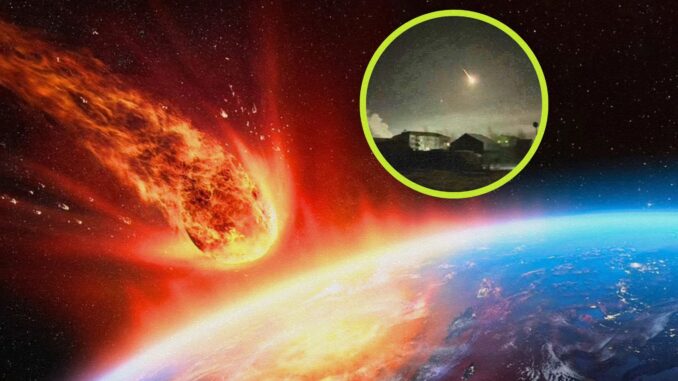
At least three city-killing asteroids that could strike Earth are hiding behind our closest neighbor Venus.
A new study warns that Venus is concealing many near-Earth asteroids, in particular, 2020 SB, 524522, and 2020 CL1, have orbits that take these asteroids dangerously close to Earth.
Just one of these huge asteroids, capable of generating a million times more energy than Hiroshima atomic bomb, could hit earth in weeks without warning, potentially wreaking havoc upon our planet before we have a chance can react.

BYPASS THE CENSORS
Sign up to get unfiltered news delivered straight to your inbox.
You can unsubscribe any time. By subscribing you agree to our Terms of Use
“Twenty co-orbital asteroids [space rocks in the orbit of two celestial bodies] of Venus are currently known,” the authors warned in the arockcalyptic study, which was published in the journal “Astronomy & Astrophysics.”
WEF Unveils Bill Gates’ «Death Pods» That Remotely Kill «Useless» Citizens
NYPost reports: The international research team, led by Valerio Carruba of São Paulo University in Brazil, wrote that at least three of the asteroids — 2020 SB, 524522 and 2020 CL1 — that circle the sun in tandem with our twin planet have unstable orbits that take them dangerously close to Earth, the Daily Mail reported.
If this shaky trajectory is shifted only slightly by a small gravitational change or other force, the asteroids could be set on a collision course with our planet, per the study.
“Co-orbital status protects these asteroids from close approaches to Venus, but it does not protect them from encountering Earth,” the researchers warned, according to the Daily Galaxy.
Carruba & Co. came to this conclusion by using imitation space rocks to simulate a range of possible outcomes over 36,000 years, finding that there is a sizable population of low-eccentricity asteroids — those previously thought to be harmless — that could be propelled toward Earth via gravitational shifts and other factors.
To make matters worse, the aforementioned cosmic rocks’ orbits make them almost invisible to Earthly detection devices.
While scientists at NASA and other space agencies routinely track potentially hazardous near-Earth asteroids, the telescopes can’t spot rocks in a suborbital path with Venus due to the sun’s glare, which shields them like a cosmic cloaking device, WION reported.
Due to this interstellar blind spot, the Rubin Observatory in Chile would have only two to four weeks to spot deadly asteroids, leaving us little time if they were on a collision course.
For reference, a mission to engineer something that could deflect a killer space rock generally takes years to formulate.
“Low-e [low eccentricity] Venus co-orbitals pose a unique challenge, because of the difficulties in detecting and following these objects from Earth,” the authors wrote in their conclusion.
It would be bad news if one of these intergalactic gravelstones hit home.

